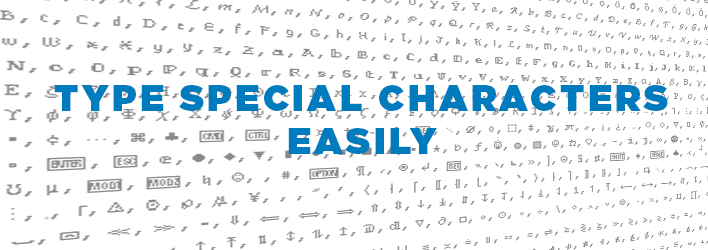- Under Files and Folders section, enable New Terminal at Folder and/or New Terminal Tab at Folder and assign a shortcut key to it. Option 2: If you want the shortcut key to work anywhere, create a new Service using Automator, then go to the Keyboard Shortcut to assign a shortcut key to it. Known limitation: not work from the desktop.
- One of the quickest and easiest ways to open Terminal on Mac is with Spotlight Search. 1) If you have the Spotlight Search button in your menu bar, click it. Otherwise, you can use the keyboard shortcut Command + Space. 2) Type in 'Terminal'. 3) You should see the Terminal application under Top Hit at the top of your results.
- Mac Os Terminal Keyboard Shortcuts 10
- Mac Os Open Terminal Shortcut
- Mac Os Terminal Keyboard Shortcuts Keyboard
On Mac OS X - the following keyboard shortcuts work by default. Note that you have to make Option key act like Meta in Terminal preferences (under keyboard tab) alt (⌥) + F to jump F orward by a word alt (⌥) + B to jump B ackward by a word.
Key binding allow you to swap around the action of keys (or key combinations) on the Mac keyboard.
The default key bindings for the Home and End keys in macOS are different to most other operating systems.
To remaps the key bindings of the current user, edit the default keybinding file:
~/Library/KeyBindings/DefaultKeyBinding.dict
If they are not already in place - just create the file & directory.
Do not edit the built-in /System/Library/KeyBindings/DefaultKeyBinding.dict file, as that will affect all user accounts on the machine. The personalized bindings will take precedence so that is all you need to edit.
The sample file below includes some help text and the codes to set Home and End to Start/End of line:
This remapping works in most Mac apps (but some like BBEdit, XCode and Firefox do their own key handling) for the terminal app see below.
After editing the DefaultKeyBinding.dict file, you will need to restart the relevant application.
Home/End mapping via Jon Evans, Start/End mapping via osxnotes.net who have lots of other remapping suggestions.
Key mapping in system preferences:
The key remapping available in system preferences allows swapping the 4 keys: Caps Lock, Control, Option and Command . This is to support non-Apple keyboards which may have the keys in a slightly different place.
Art files for mac free download. Apple > System Preferences > Keyboard > Keyboard > Modifier Keys
Terminal.app
Terminal.app does not respect the macOS Key Bindings, but you can set terminal-specific keybindings in the Terminal.app preferences:
Profile > Keyboard > then click + to add a keybinding
The shortcuts you'll need to add for Home and End (via evilissimo):
ESC[H - For the Home key
ESC[F - For the End key
When you type these in (press the actual Esc key) they should appear as the following escape codes:
'There are shortcuts to happiness, and dancing is one of them' ~ Vicki Baum
Related macOS comands:
Keyboard Shortcuts - bash Terminal
Keyboard Shortcuts - macOS
Guide to customizing macOS key bindings with a .plist or .dict property list. - Jacob Rus
Text System Defaults and Key Bindings + Full list - Apple.com
Spectacle app - Shortcut keys for Maximise/Minimise.
Some rights reserved
Screen Capture to disk:
Screen Capture to clipboard:
Copy and Paste
Dock /Switch Applications
Apple Finder
QuickLook
Terminal
QuickTime Player

Spotlight
Editing Text (email, TextEdit etc)
Mac Os Terminal Keyboard Shortcuts 10
Shutdown/Logoff:

Spotlight
Editing Text (email, TextEdit etc)
Mac Os Terminal Keyboard Shortcuts 10
Shutdown/Logoff:
To boot into Safe mode:
- Shut down, and wait 10 seconds before pressing the Power Button to start up.
- As soon as you hear the startup chime/chord, press and hold down (Shift).
- Once the Apple logo and progress bar appear, you can release the Shift key.
To return to normal mode, restart the Mac without holding down any keys.
To Restart a system that fails a normal shutdown, open a terminal window and type:sudo shutdown -r now
Log out:
During Startup:
macOS Recovery (Restore/Repair/reinstall macOS)
At startup, press and hold one of the following key combinations:
is the Command or Apple key
is the Option or Alt key
is the Shift key
⌫ is the Backspace key
System Preferences
To disable or change any keyboard shortcuts, open System Preferences | Keyboard | Shortcuts
per-application settings can be added under App Shortcuts press [+]
To reset to the default settings, open Keyboard Shortcuts and press [Restore Defaults]
To enable keyboard control in dialog boxes: Keyboard | Full Keyboard Access=All Controls
Full keyboard access will allow you to use Tab,Shift-Tab,Enter, Esc and the Space bar to navigate a dialogue box.
To display an on screen keyboard: System Preferences | Language & Text | Input sources | Keyboard/Character viewer
Function Keys
F3 or Ctrl + ↑ Open Mission control / Spaces.
F8 Toggle Space.
F9 Exposé - Show all open windows.
F10 Exposé - Show all open windows for an application.
F11 Hide all windows.
F12 Open/close Dashboard.
Add to the above F.Keys for a slow-motion effect
You can discover additional keyboard shortcuts by opening a menu and pressing the ⌥ (Option) and ⇧ (Shift) keys. For example, in Finder, open the File menu and press the ⌥ (Option) key.
'Command + Tab' cycles through Applications,
'Command + ~ (tilde)' cycles through an individual Applications windows'
Mac Os Open Terminal Shortcut
Related macOS comands:
Bash Terminal Keyboard shortcuts
nvram - Manipulate or reset firmware variables.
macOS Key bindings - Remap the Home and End Keys.
Disable or Change 'global' keyboard shortcuts on Mac (Apple).
HT201236 - Keyboard Shortcuts Quick Reference (Apple).
screencapture - Take Screenshots.
Applications:Utilities:Grab - Copy the screen to a TIFF file with (optional) 10 second delay.
DanRodney - macOS Keyboard Shortcuts.
Mac Os Terminal Keyboard Shortcuts Keyboard
Some rights reserved
